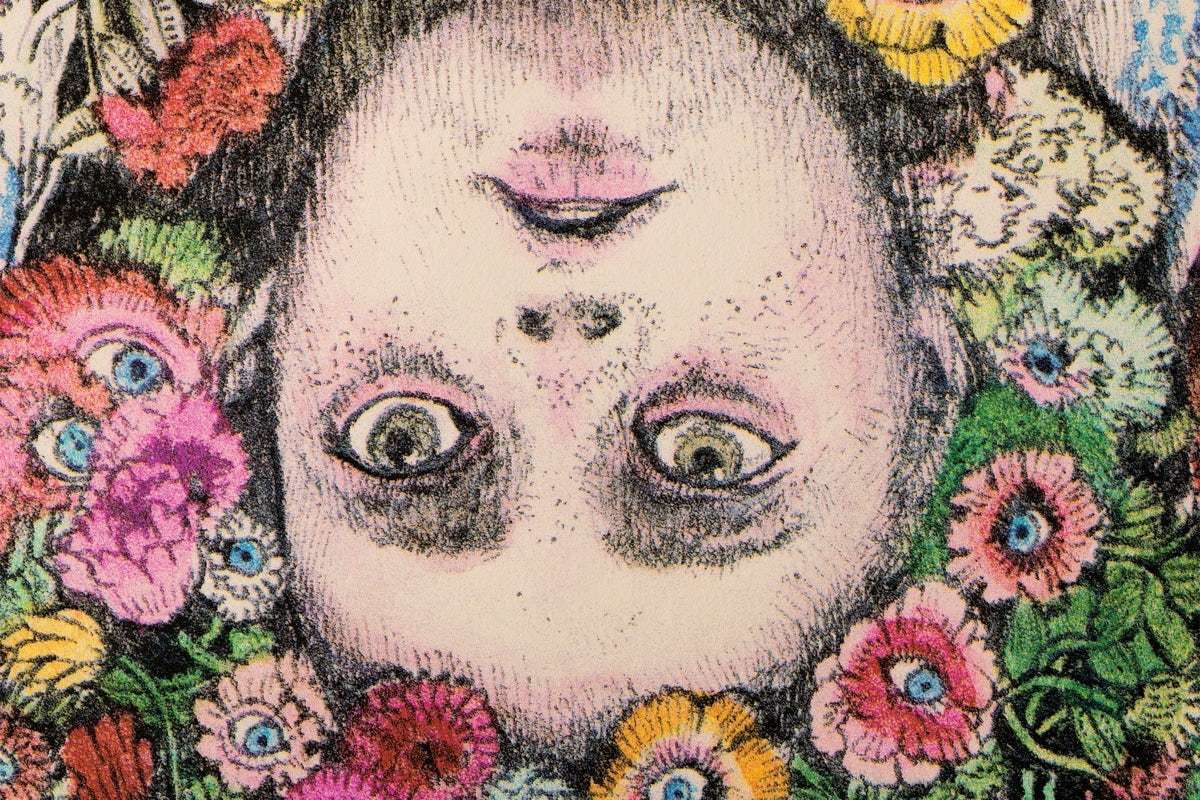Tracking a trend in search of a deeper connection
To those who’ve subscribed recently, thanks! It’s great to get some positive feedback on something that I’ve always enjoyed doing, though have neglected for years till now! If you’re new here, consider subscribing and/or sharing 🙂
→ Scroll to the bottom for a couple of interesting podcast recs
Having noticed a certain trend towards psychedelia in branding and design lately, I’ve been thinking about where it’s coming from. It could simply be a reaction to the clean, humanist sans-serif startup world of the 2010s (as I touched on in my last blog), but I wonder if it could be reflective of, and used in the advancement of a desire for deeper connection with nature and with each other.
We’re currently going through an era of reappraisal of psychedelics and other drugs, and many scientific studies point to significant benefits in the use of psilocybins and MDMA for things like depression, anxiety and PTSD. These drugs have famously been adopted by Silicon Valley polycules, and—as with most things picked up by the capitalist class—have been sanitised, microdosed and put to use in service of increased productivity, often to counteract the negative impacts of their own technology (the main result of which is increased sales of kombucha and cbd-infused-everything.)

The psychedelic renaissance in medicine has led to a wide range of brands using visual cues from the Doors posters to associate their products with mental health and self-care, and this slick psychedelia has arguably become the defining look of 2023. I found this run-down of 2023 branding trends from 99designs (maybe the lowest common denominator of the design world?) and nearly all of them are variations on the 70s psychedelia-inflected theme.

Where psychedelia gets interesting, I think, is in its folkish roots. The revival of Folk Horror represented in ‘Midsommar’, is, I think, a good illustration of a new-found fascination with nature, and also speaks to a deep fear that runs through our collective psyche—a fear of community, and of each other. We desperately yearn for a time before phones, Facebook and 4chan, before 24 hour news, before Twitter, before Tiktok. We yearn to be closer to each other, but we’re also terrified of the prospect.
I think there’s something in this fear that’s a powerful communication tool. Fear is fun, and nature is scary, awe-inspiring and cool. It’s not the reserve of anorak-wearing birdwatchers, shotgun-toting farmers or sandal-wearing hippies, and it’s not over in some rainforest somewhere. Nature is for everyone, and it is all of us. But how to communicate that?
In campaigning we use these terms like ‘nature-connection’ and ‘climate change’ in our efforts to make people engage. The paradox is that naming something separates it—puts it in a category apart from ourselves and our lives. ‘Climate Change’ or more recently, simply ‘Climate’, is thrown around by activists and scientists alike, and it’s all over our communication with the public. But in as much as it means anything to anyone, a term like this embodies the intangible—the numbers, the science, the policies—and tends to alienate people outside a very specific group of people who care about those things.
Brands deal in vibes, embodying just enough of an appealing identity so that people can consume it and make it part of their own. Activism is usually a step behind branding, picking up the Canva templates left over in the tail end of the wave. But I think we could embrace the darker, edgier side of this particular trend—the folklore, the scary stories, the characters—to really embody this desire to return to nature, put the phone down and touch grass.
Podcast Round-up:
I listen to a lot of podcasts: probably too many to reliably keep any information in my head. So in an attempt to parse the highlights from the parasocial background noise, here are a few recent episodes that stood out to me.
This interview with Naomi Klein from the QAnonAnonymous podcast—if you haven’t listened to QAA, fear not, it’s a podcast that started analysing the phenomenon of QAnon back in 2017 (not one that promotes it).
Naomi Klein is a leftist media and culture critic who wrote the hugely influential ‘No Logo’ and more recently ‘The Shock Doctrine’, who also regularly gets mistaken for feminist-thinker-turned-alt-right-reactionary, Naomi Wolf. This frequent misidentification has led Klein to the concept of doppelgängers and the mirror world, which I find fascinating, and a very apt description of the ‘left-right’ divide that’s increasingly becoming a divide between different realities. I will be checking out the book for sure.
Endless Thread has reliably scratched the itch that Reply All used to for me, unearthing weird and intriguing stories from the web—ostensibly from Reddit threads—and following them up. This one follows the nature theme, tracking one Redditor’s obsession with slime mould. Some fascinating facts about slime and fungus, and the nature of intelligence—and also about the inevitable descent into in-fighting and factions that happens whenever someone tries to be interested in a thing on the internet.
Thanks for reading! Here’s another one:
Leave a Reply